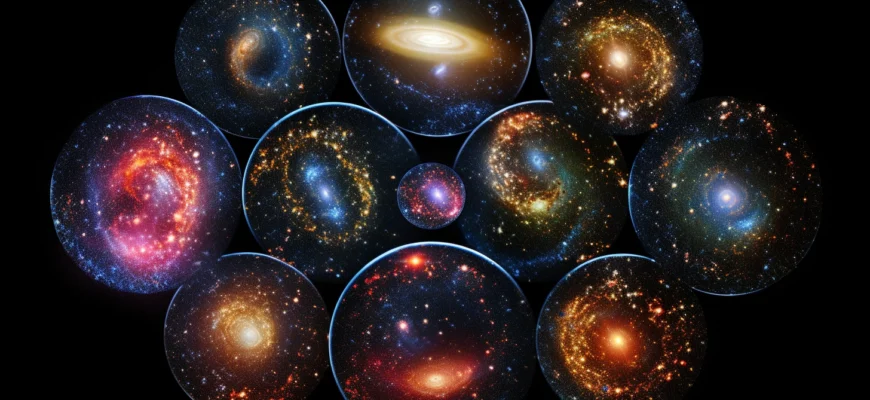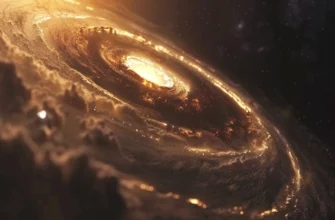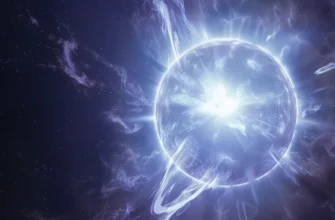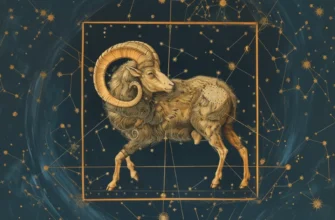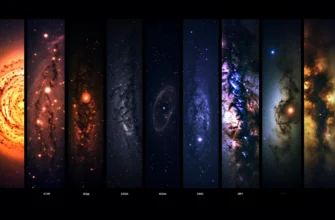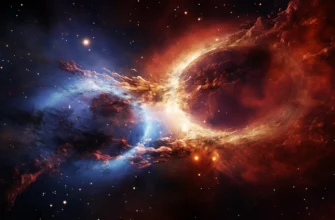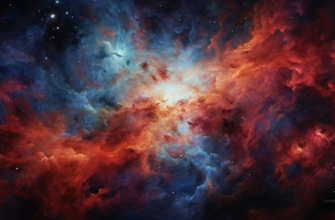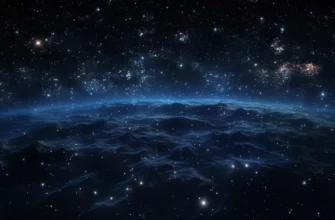- Mini-Galaxies – dwarf galaxies
- Defining Features of Mini-Galaxies
- How Mini-Galaxies Form
- Types and Classifications
- Dwarf Galaxies
- Dwarf Irregular Galaxies
- Dwarf Elliptical Galaxies
- Dwarf Spheroidal Galaxies
- Ultra-Compact Dwarf Galaxies
- Unique Properties and Characteristics
- Interactions with Large Galaxies
- Tidal Disruption
- Gas Stripping
- Accretion and Merging
- Role in Understanding Dark Matter
- Density Profiles
- Self-Interaction Strength
- Fundamental Particle Properties
- Ongoing Research on Mini-Galaxies
- Missing Satellites Problem
- Ultra-Diffuse Galaxies
- First Mini-Galaxies
- References
Mini-Galaxies – dwarf galaxies
Mini-galaxies, as the name suggests, are dwarf or miniature versions of full-sized galaxies like our own Milky Way. They range in size from just a few light years across to a few thousand light years in diameter, making them tiny in comparison to galaxies which can span 100,000 to even 1 million light years. Despite their small stature, mini-galaxies follow the same processes of star formation and evolution as regular galaxies, making them intriguing to study for astronomers. So let’s start by looking at what exactly makes a mini-galaxy “mini”.
Defining Features of Mini-Galaxies
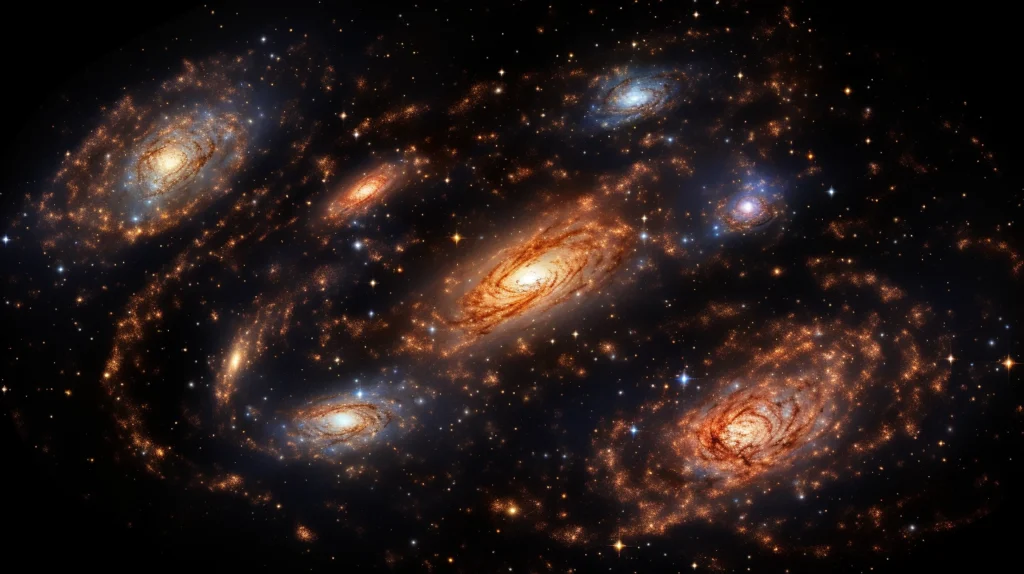
Mini-galaxies, also frequently called dwarf galaxies, are characterized by a few key traits:
Small size – They range from just a few light years to around 3,000 light years in diameter, making them much smaller than full-sized galaxies. The Milky Way, for example, spans over 100,000 light years.
| Galaxy Type | Approximate Diameter |
|---|---|
| Mini-galaxy | 1 – 3,000 light years |
| Milky Way | 100,000 – 180,000 light years |
- Low mass – With fewer stars, mini-galaxies have much lower masses than their larger counterparts. Their masses range from about 10 million to a few billion solar masses. The Milky Way is estimated to have a mass between 400 billion and 3 trillion solar masses.
- Low luminosity – As they contain comparatively fewer stars, mini-galaxies also have lower luminosities than normal galaxies. Their brightness ranges from around 1 million to 1 billion times fainter than the Milky Way.
- Low metallicity – Mini-galaxies tend to have less of the heavier elements, or “metals”, beyond hydrogen and helium. This indicates less star formation over their lifetimes.
So in essence:
Mini-galaxies are diminutive versions of large galaxies like our Milky Way, with smaller sizes, lower masses and luminosities, and less heavy element enrichment. But they follow similar structural patterns and evolutionary processes.
Now let’s examine how these tiny star cities come to be.
How Mini-Galaxies Form
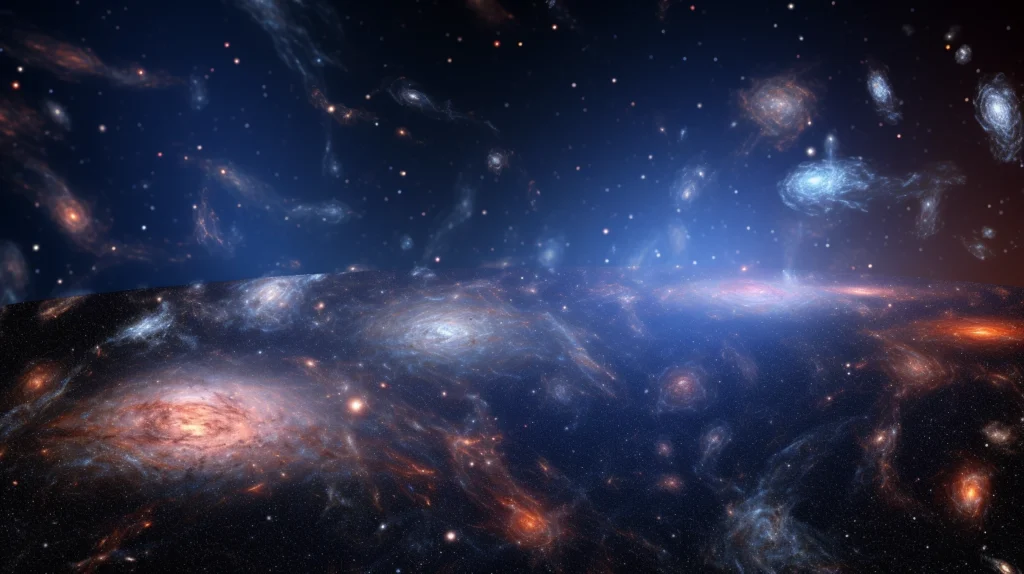
Mini-galaxies are thought to form similarly to regular-sized galaxies, through the gravitational collapse of gas clouds in the early universe. The key difference is the much smaller amounts of matter involved. While normal galaxies coalesce from giant hydrogen clouds containing millions of solar masses of material, mini-galaxies begin as smaller, more isolated clouds.
The leading theory for mini-galaxy formation considers two factors:
1. Density of Surrounding Matter – The lower density environments that dwarf galaxies formed in meant less material available to pull together through gravity. This naturally led to smaller collections of gas and stars.
2. Reionization of Universe – Early in cosmic history, the ignition of the first stars and galaxies flooded the universe with radiation that ionized (electrically charged) the hydrogen gas. This made the gas harder to pull together into galaxies, limiting the growth of smaller proto-galaxies.
So in short, a combination of lower density surroundings and reionization effects stunted the growth of the precursors to mini-galaxies, yielding their miniature dimensions we see today.
For a summary, dwarf galaxy formation depends on:
- Less dense environments -> less matter to coalesce
- Reionization heating gas -> harder to collect into galaxies
Now let’s survey the different species of mini-galaxies found sprinkled across our universe.
Types and Classifications
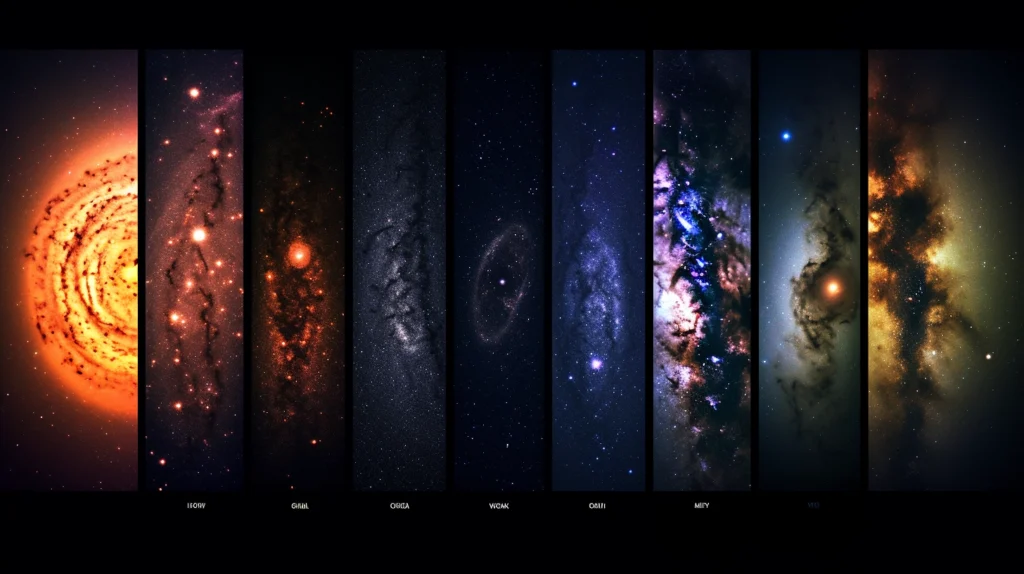
There are a few main morphological types that mini-galaxies fall into, based on their shapes and stellar contents:
Dwarf Galaxies
The broadest category is dwarf galaxies: any galaxies with low luminosities and small sizes, from just around 10 million solar masses upwards. Many billions of dwarf galaxies likely exist in our observable universe based on cosmological simulations.
Dwarf Irregular Galaxies
Dwarf irregular galaxies have chaotic, asymmetric shapes without any spiral arms or central bulges. They also lack consistent stellar populations, as bursts of star formation occur sporadically. Our [Local Group](local group) of nearby galaxies contains some dwarf irregulars, like the [Small](small magellanic cloud) and [Large Magellanic Clouds](large magellanic cloud) orbiting the Milky Way.
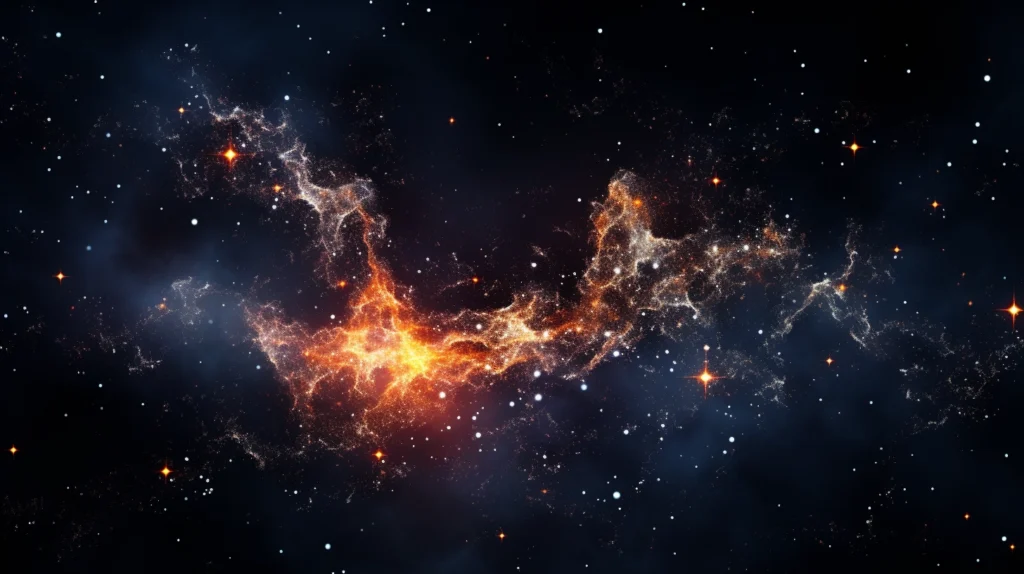
Dwarf Elliptical Galaxies
Dwarf elliptical galaxies appear round and smooth like spherical or egg-shaped ellipses. They contain mostly old stellar populations with little current star formation. Dwarf ellipticals likely contain large amounts of dark matter and are commonly found clustered around giant galaxies like our Milky Way as satellite galaxies.
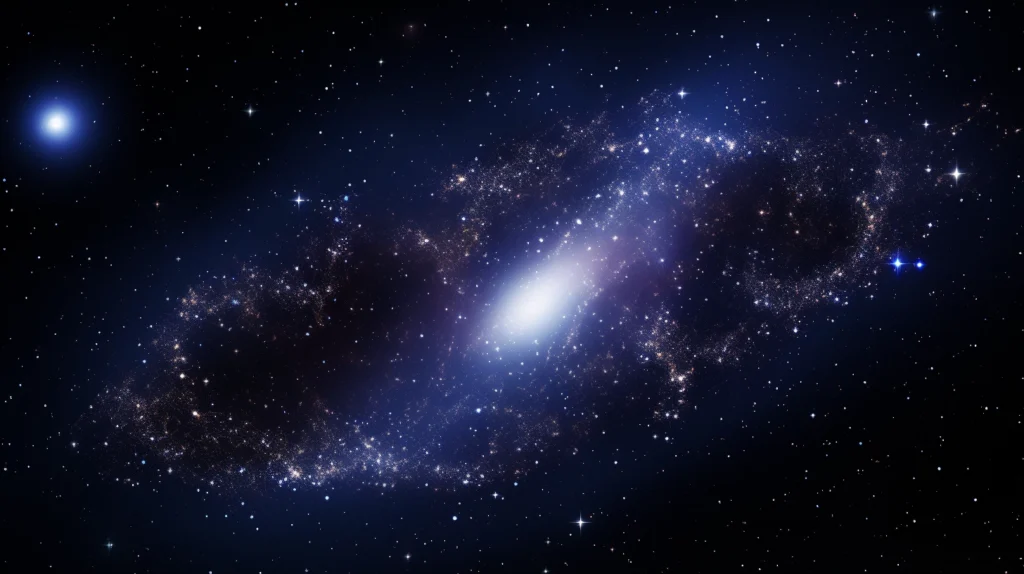
Dwarf Spheroidal Galaxies
An even rounder subclass is dwarf spheroidal galaxies: dwarf galaxies appearing perfectly smooth and featureless, shaped like spheres or ellipsoids. They consist almost entirely of old stars with no remaining gas for star formation. Our Milky Way hosts about 20 known dwarf spheroidal galaxies including [Fornax](fornax dwarf spheroidal galaxy), [Sculptor](sculptor dwarf galaxy), and other diminutive neighbors.
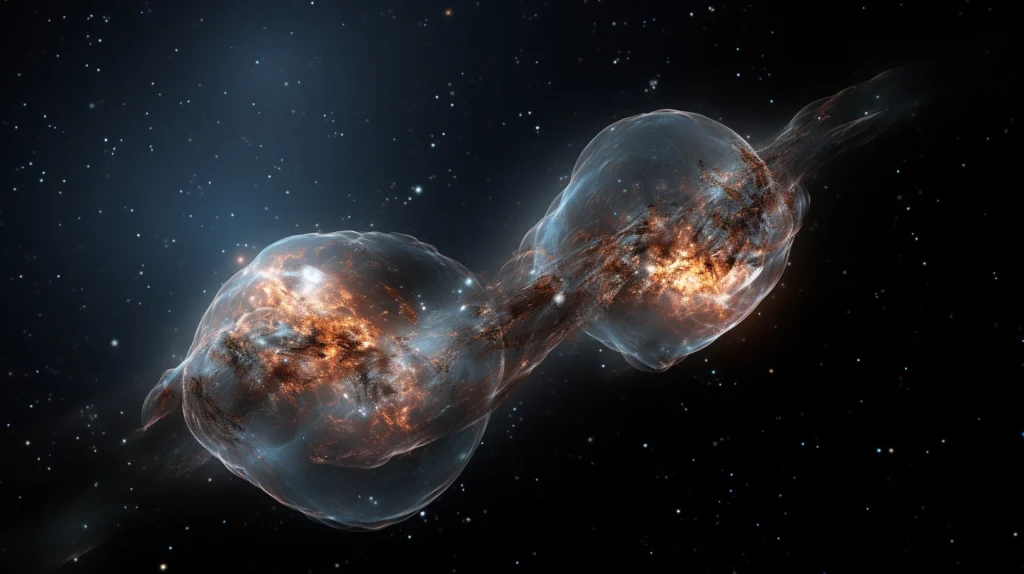
Ultra-Compact Dwarf Galaxies
On the more extreme end of small are ultra-compact dwarf galaxies (UCDs). These tiny galaxies span only 3 to 100 light years yet contain up to 100 million solar masses. They are among the densest stellar systems known, up to million times denser than the Milky Way galaxy! Many UCDs seem to orbit inside galaxy clusters and may represent the remnant nuclei of larger galaxies that have been stripped of stars during collisions. Their origins remain unclear and debated.
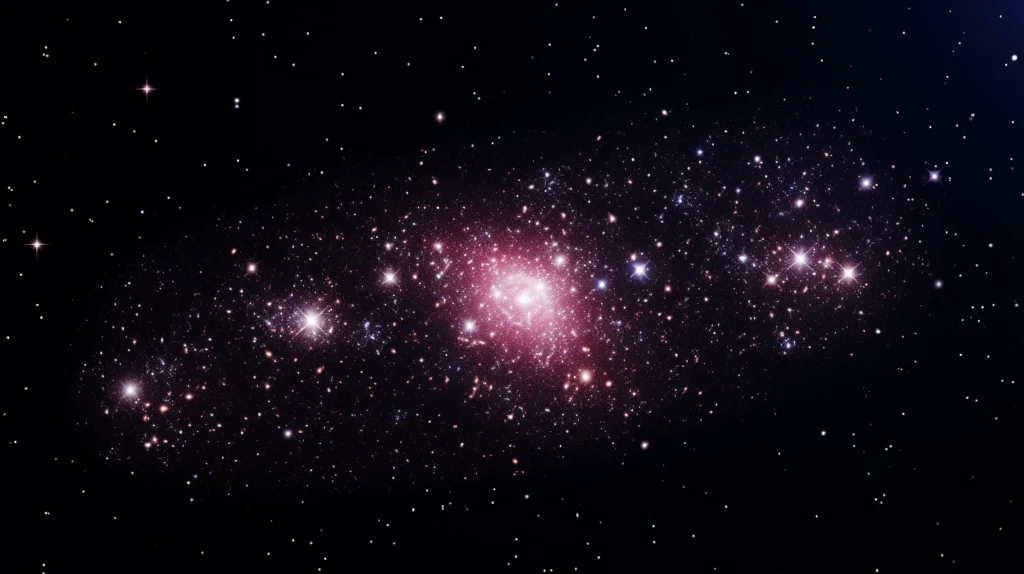
So in summary:
- Dwarf irregulars – Chaotic shapes, sporadic star bursts
- Dwarf ellipticals – Smooth, spherical shapes, old stars
- Dwarf spheroidals – perfectly round, no star formation
- UCDs – ultra-dense stellar systems around 100 light years across
This covers the main mini-galaxy categories, spanning a vast range in properties despite their pint-sized statures. Next let’s look at some of their unique characteristics compared to giant galaxy counterparts.
Unique Properties and Characteristics
Given their tiny sizes yet similarity to large galaxies, mini-galaxies provide astronomers unique insights into galaxy formation and evolution. Some of their notable qualities include:
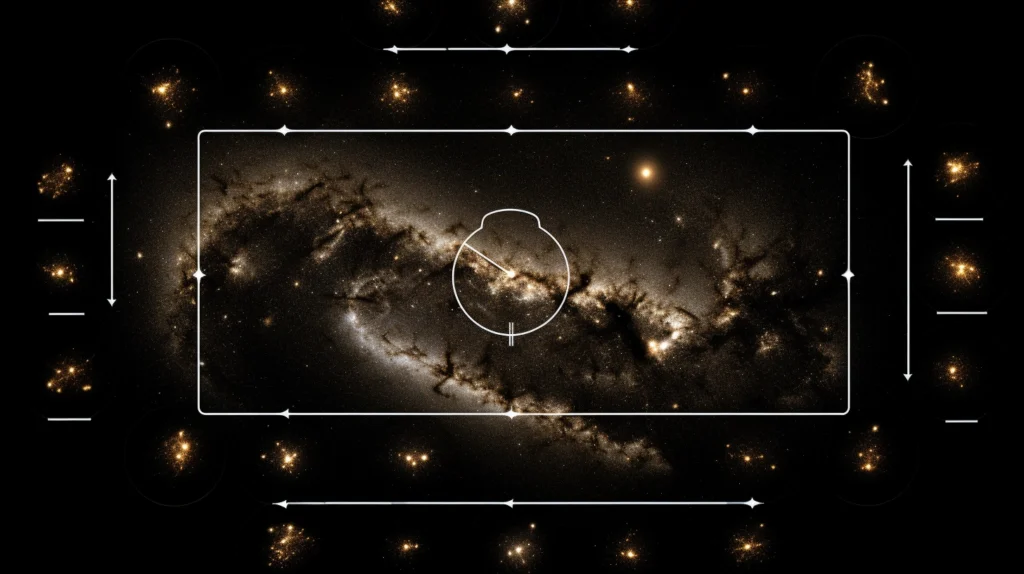
Primitive compositions – Dwarf galaxies undergo less stellar processing and enrichment than large galaxies. Their simpler makeup resembles that of the early universe more closely. Studying their stellar populations and gas provides a glimpse into the primitive conditions soon after the Big Bang.
“Dwarf galaxies are among the most metal-poor galaxies in the Universe and the nearest low-metallicity equivalents of the environment of the early Universe.” (Tolstoy et al. 2009)
Susceptibility to external influences – Due to their lower masses and densities, mini-galaxies are more vulnerable to gravitational interactions and gas stripping during close encounters with massive galaxies. This allows studying the effects of harassment and gas loss on their evolution.
Testing cosmological models – The sheer number and distributions of dwarf galaxies serve as tests for models of structure formation in the universe. Cosmological simulations must reproduce these populations within the standard Lambda Cold Dark Matter (ΛCDM) framework. Discrepancies could indicate gaps in our current understanding.
Dark matter content – Dwarf spheroidal galaxies are strongly dark matter-dominated, with some containing 1,000 times more dark than visible matter. This makes them ideal natural laboratories for studying the properties of dark matter itself on galactic scales.
In summary, some unique perks of studying mini-galaxies include:
- Primitive chemical compositions
- Susceptibility to external influences
- Test cosmological theories
- Dark matter physics laboratory
Now let’s look at how mini-galaxies dynamically interact with their gargantuan galaxy brethren.
Interactions with Large Galaxies
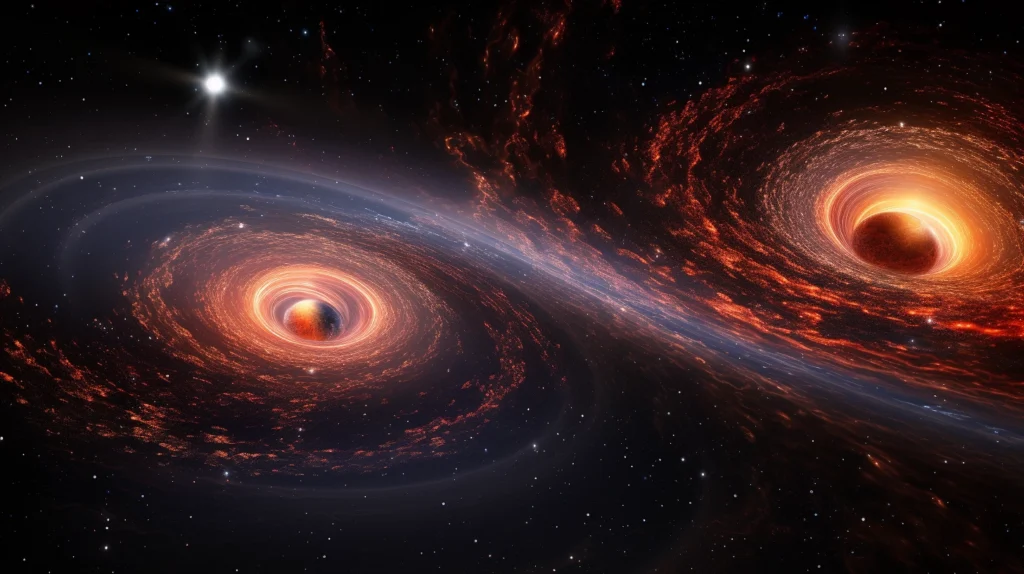
As tiny star systems orbiting inside galaxy clusters and around massive galaxies, mini-galaxies frequently experience gravitational tussles and collisions on their travels. These interactions exhibit noticeable effects on their structures and evolution:
Tidal Disruption
The immense gravity of giant galaxies can stretch and distort mini-galaxies that pass too closely in gravitational “tides”. These tidal forces pull more weakly bound stars from the outskirts of mini-galaxies into tails and streams trailing behind them. Significant mass loss can occur over multiple orbits as the victimized mini-galaxy is transformed into stellar debris.
Gas Stripping
Gaseous components are even more easily removed during close passages with large galaxies. Ram pressure from motion through the giant’s extended halo gas literally pushes gas from mini-galaxies as it passes. With their fuel for star formation stripped, this quenches future stellar nurseries and limits their evolution.
Accretion and Merging
In some cases, mini-galaxies may fall directly into giant hosts and merge completely. The larger galaxy gains stars and material, while the mini-galaxy disappears as an independent entity, perhaps leaving behind remnants of its core. This accretion process contributes to the growth of massive galaxies over time.
So in short, mini-galaxies deal with:
- Tidal disruption from gravity
- Gas stripping from ram pressure
- Accretion and merging
…during their dangerous dances with heavyweights. These interactions leave observable imprints on mini-galaxies for studying galaxy collision physics.
Now let’s look at the crucial role mini-galaxies play for one of the biggest mysteries in astronomy: dark matter.
Role in Understanding Dark Matter

One of the most valuable attributes of mini-galaxies to science are their significance for studying dark matter – the unknown, invisible substance making up over 80% of all matter in the universe. Dark matter dominates mini-galaxies, outweighing normal (“baryonic”) matter by factors ranging from 10 to 1,000 times within their bounds!
This makes dwarf spheroidals ideal for probing how dark matter becomes distributed on galactic scales and testing its interactions. Some key ways mini-galaxies help in dark matter research:
Density Profiles
By modelling the velocities of stars within dwarf galaxies, astronomers can map out the dark matter density profile – how its density increases towards their centers. The profiles indicate whether dark matter is “cuspy”, piling up steeply in galactic cores, or forms a flat “core”. Different dark matter models yield different distributions.
Self-Interaction Strength
If dark matter particles collide with each other, this would flatten cores into uniform densities. Observing highly dark matter-dominated cores thus constrains dark matter self-interaction strengths (or refutes this possibility).
Fundamental Particle Properties
The mass and scattering interactions of hypothetical dark matter particles (e.g. weakly interacting massive particles, or WIMPs) also shape density profiles and core sizes. More massive WIMPs yield more concentrated cores, while scatterings redistribute them. Mini-galaxies provide constraints on these properties.
In summary:
- Dark matter density profiles
- Self-interaction likelihoods
- Particle mass and scattering constraints
…are all gleaned from detailed modelling of mini-galaxies, thanks to their exquisite dark matter sensitivity.
This research area remains highly active today. Next let’s survey some of the latest studies and open questions around mini-galaxies.
Ongoing Research on Mini-Galaxies
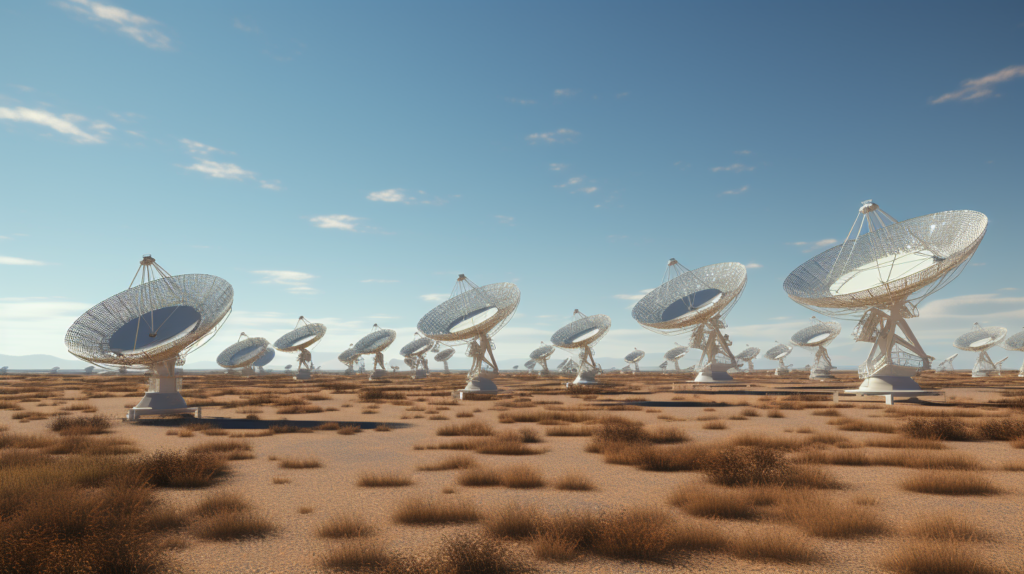
While astronomers have made great progress characterizing mini-galaxies across cosmic time, many questions remain about these dwarf denizens. Some examples of current research fronts include:
Missing Satellites Problem
Cosmological models predict hundreds more faint, dark matter-dominated mini-galaxies around the Milky Way than have been observed. Where are these missing satellites? Did early universe heating suppress their abundance, or are there simply too few stars to detect most of them?
Ultra-Diffuse Galaxies
Recently, more mini-galaxies have been discovered with extremely low surface brightnesses, dubbed ultra-diffuse galaxies. These ghostly, dark matter-laden systems are challenging to detect and their origins unclear. How abundant are they?
First Mini-Galaxies
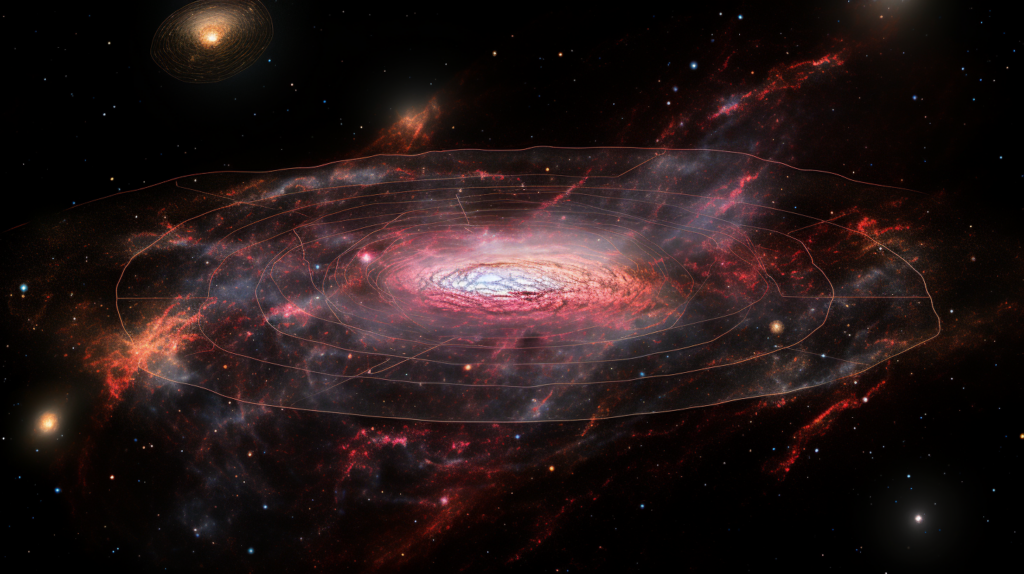
Astronomers are seeking out the very first, smallest proto-galaxies emerging in the young universe after the Big Bang. Cutting-edge telescopes like the James Webb Space Telescope may reveal these initial seeds and conditions allowing the first stars and galaxies to develop.
Clearly, plentiful puzzles and opportunities for discovery remain for unlocking the secrets of mini-galaxies across cosmic time. Given their ubiquitous presence surrounding giant galaxies and susceptibility to environmental influences, understanding mini-galaxies is integral to constructing a complete picture of galaxy evolution. Their simplicity also informs us about the primitive astrophysical processes in the infant universe.
These tiny star cities will continue shedding light from the dawn of galaxy formation, informing our quest towards comprehending the origin and structure of our vast cosmos. Even the faintest dwarfs have an oversized contribution to make.
References
Tolstoy, Eline, et al. “Star-formation histories, abundances, and kinematics of dwarf galaxies in the local group.” Annual Review of Astronomy and Astrophysics 47 (2009): 371-425.
Simon, Joshua D. “The Faintest Dwarf Galaxies.” Annual Review of Astronomy and Astrophysics 57 (2019): 375-415.
Bullock, James S., and Michael Boylan-Kolchin. “Small-scale challenges to the ΛCDM paradigm.” Annual Review of Astronomy and Astrophysics 55 (2017): 343-387.

